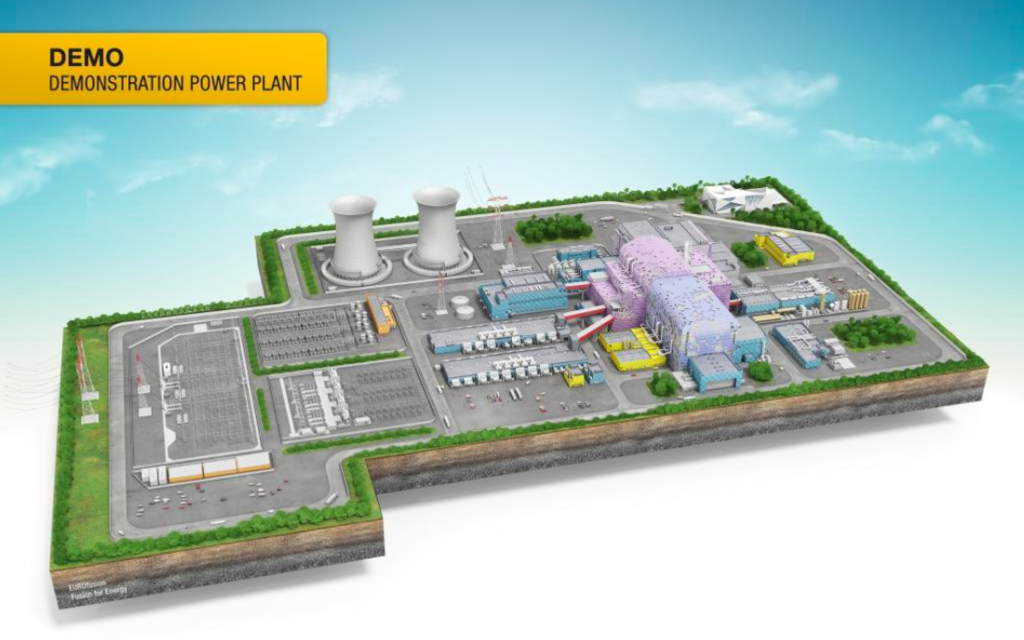
The engineering design of DEMO, the first fusion demonstration power plant, has begun. The ambitious goal is to safely and sustainably generate 300-500 MW of electricity by the middle of the century, an amount able to meet the annual needs of around 1 million households.
The announcement came from the EUROfusion Consortium during the launch event of Horizon EUROfusion, the new fusion research programme co-funded by the European Commission through Euratom.
The EUROFusion Consortium for the development of nuclear fusion involves 21 Italian organizations coordinated by ENEA, including the Institute for Plasma Science and Technology of the National Research Council (CNR-ISTP) and the RFX Consortium, whose members are CNR, ENEA, INFN (National Institute for Nuclear Physics), University of Padua and Acciaierie Venete.
DEMO (Demonstration Fusion Power Reactor) will be the successor to the ITER experimental plant, currently under construction in the south of France, in Cadarache. It is designed to demonstrate the technologies needed to safely and continuously generate electric power from nuclear fusion.
“This is an important step that will move fusion research from a purely experimental sphere to the actual production of electricity. To do so, DEMO will have to adopt the most advanced technologies to ‘control’ the plasma and generate electricity safely and continuously by operating with a closed fuel cycle,” pointed out Alessandro Dodaro, director of ENEA’s Fusion and Technology for Nuclear Safety and Security Department. “To this end, together with our partners, we are building the Divertor Tokamak Test (DTT) super laboratory at the Frascati Research Centre. Here we will test various new configurations and materials for the divertor, the device that allows the removal of residual heat inside the fusion reactors with power flows exceeding 10 million watts per square metre, comparable to those on the surface of the Sun,” added Dodaro.
“This step is in line with the European roadmap aimed at generating energy from fusion reactions,” explained Daniela Farina, director of the CNR Institute for Plasma Science and Technology. “In order to achieve this goal, the research community must actively pursue, with the broadest possible perspective, the scientific and technological issues that are still open and on which the CNR is working in synergy with other Italian organizations and institutions as part of an extraordinary worldwide collaboration. It is a global effort that cannot be implemented without strong support in the long term.”
“The decision to develop the DEMO project, a demonstration fusion reactor in Europe, is the natural development of Europe’s ongoing commitment, having always been a global leader in this field, to promoting research into energy sources with a low environmental impact, hydrogen fusion being one of the ingredients in the basket of renewable and eco-sustainable sources,” emphasized Piergiorgio Sonato, president of the RFX Consortium. “In the CNR Research Area in Padua, in addition to the RFX-mod experiment, which is one of the high priority research infrastructures as defined in the PNIR (Italian National Research Infrastructure Plan) 2021-27, the RFX Consortium hosts the NBTF-Neutral Beam Test Facility, the laboratory that develops neutral particle injectors for ITER. This is the indispensable element required for igniting and controlling the hydrogen fusion reaction in the ITER reactor that is being installed in Cadarache, France, to which China, South Korea, India, Japan, Russia, the USA and the European Union are contributing,” concluded Sonato.
Fusion research aims to replicate the nuclear reactions that take place in the Sun and in other stars, during which an enormous amount of energy is released, for large-scale, safe, cost-competitive and environmentally friendly power generation. In terms of yield, for a given amount of fuel, fusion will generate nearly 4 million times more energy than burning coal, oil or gas.

